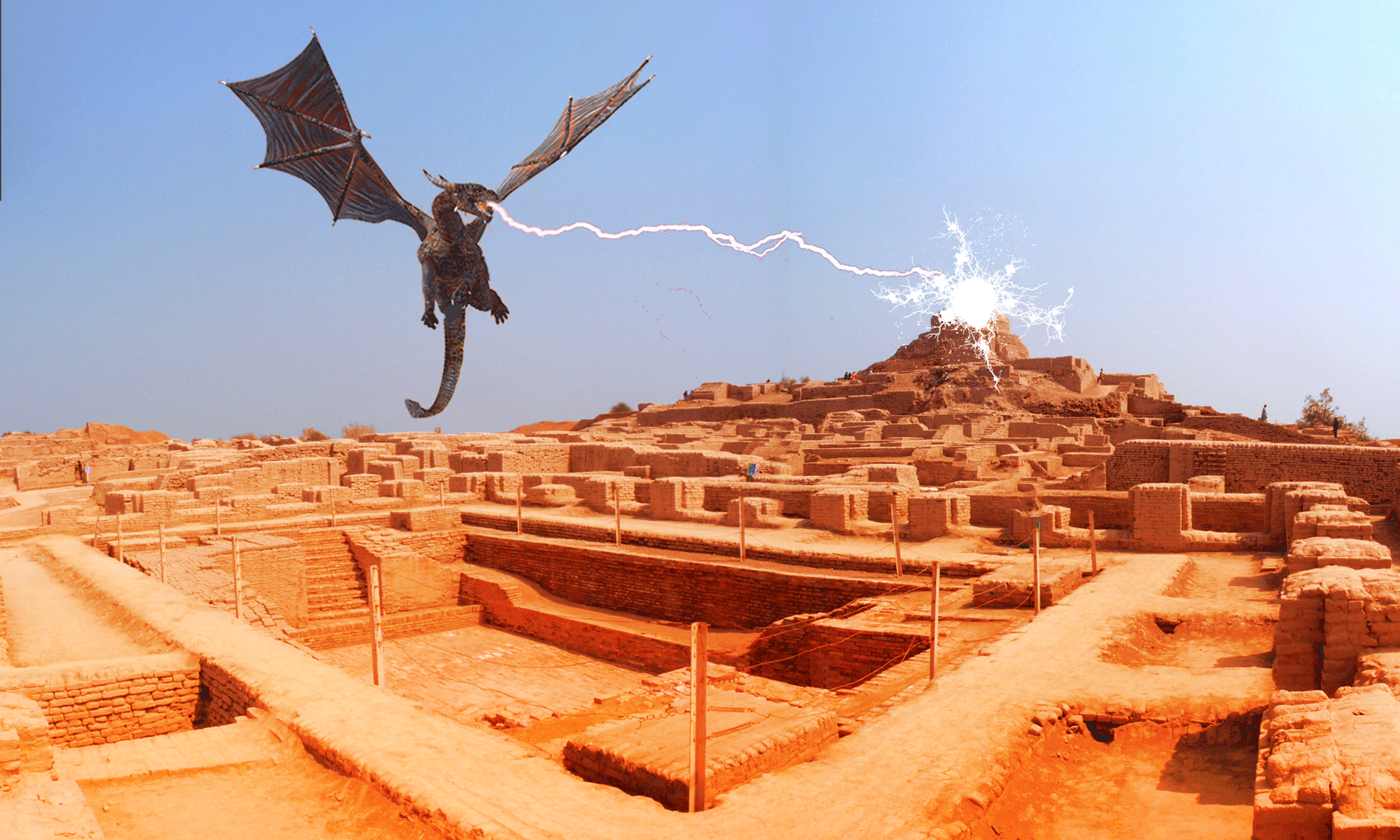
At the origin of our civilizations there are hydraulic civilizations, expert in fluid mechanics and a forgotten science: lightning control or fulgurology. Any ancient civilizations – in China, in America, in the Middle East and Europe, in the Far East and the Pacific islands – demonstrate a mastery of the water and its circulation, which increases with antiquity.
Thus in the Andes, a grandiose achievement was dedicated to the irrigation water, I want to mention the countless terraces that cover the steep mountainsides for miles. When Conquista, the Spanish troopers baptized andenes, meaning docks in Spanish. And this word andenes baptized then the entire mountain chain: the Andes.
It is quite remarkable that our archaeologists still ascribe to the unfortunate realization of andenes Incas, who were content to maintain them. What motive could have pushed them to undertake such a work? The sea, in their time, had regained its current level, 4000 meters below … The Incas did not know anything about these masonry wall bars by ancient legends …
All ages, all countries testify to the existence of giants. According to these ancient myths, ancient giants have done all this work a long time ago. When will it be known once and for all, the fabulous antiquity of this divine city?
“A day will come when science will prove that the classical civilizations of the Pharaohs, Chaldeans, and Brahmins, are far from being the oldest, as was long believed and as yet believed. In truth civilization Tiahuanaco annéesvoire thousands of millions of years of anticipation on them.” (source)Wiener, French archaeologist, 1876
Wiener, the author of this sentence was an archaeologist and visionary. It was still possible in 1876. Today an archaeologist must choose sides: the right vision or cushy career. And anthropology is not better off. Hydraulic civilizations are the oldest known. That is to say that the hydraulic knowledge have been declining since the ancient times.
Roman Hydraulics
The work of Pierre-Louis Viollet clear that hydro was perfectly controlled by ancient civilizations and how the decline of such knowledge is sensitive since Roman times. (source)Pierre-Louis Viollet L’hydraulique dans les civilisations anciennes : 5000 ans d’histoire
The Romans built aqueducts, while their predecessors, the Etruscans did not bother to built a huge monument to cross a valley, they just dug the passage of a pipe down the valley and up, then the principle of communicating vessels did the rest.
However, the Greco-Roman antiquity preserved many previous hydraulic expertise. Witness this clever hydraulic telegraph that allowed long distance communications. The question is that all the oldest civilizations are oriented towards enlightenment. All use lightning. Finally they all have great control of hydraulic science and fluid mechanics. This knowledge is probably related. How have acquired this knowledge? In which schools?
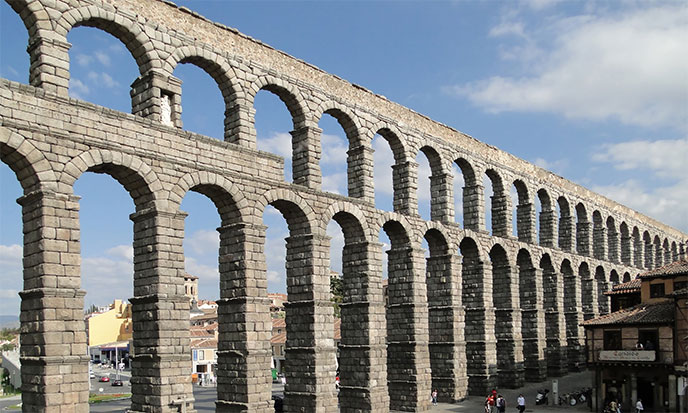
Inca Hydraulics
All pre-ancient civilizations have captured the energy of lightning to vibrate the water pools, tanks and troughs. The Colca waterfall in the San Martin jungle in Peru was specially arranged to flow a thin layer of water in cosmic rays, solar and lunar. This water vibrated by vital waves described by Marcel Violet water was very precious life that gave health, strength and immortality to the gods before and patriarchs.
The Incas -or their ancestors most probably- had a high level knowledge of hydraulics and fluid mechanics. They found – they or their predecessors – ingenious applications of communicating vessels for the water rise in the Andes. Their wells can reach staggering depths.
In short, it is difficult to find a so-called first culture that does not have a mastery of hydraulics. This paradox has not escaped the mainstream archeology that indicates these very ancient peoples as generic hydraulic civilizations.
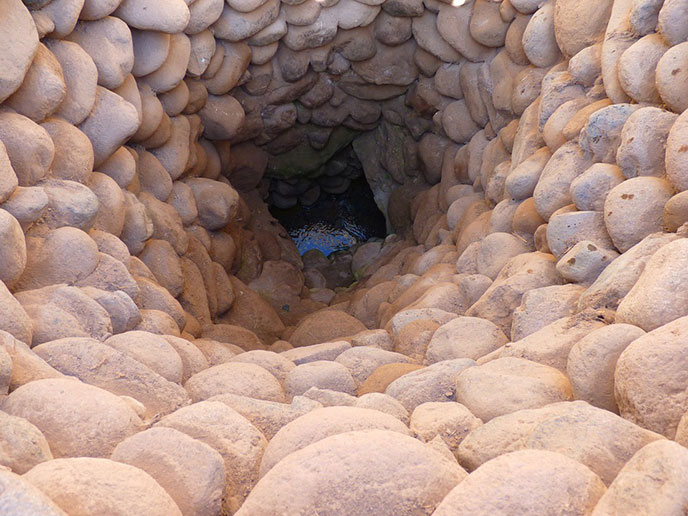
We Have Been Helped
The question, however, that archaeologists have not solved is: where all these civilizations they fired these hydraulic knowledge? How to explain the scope and complexity of their expertise in this area? Why are such prodigious knowledge, after exits of nothing is to be lost in the future?
As it seems, in the Incas as elsewhere, the hydraulic know has been declining, not growing. Which could show that the hydraulic as advanced science was taught to some very distant ancestors, who have pretty much mastered at first, and then knowledge has gradually erased.
These hydraulic civilizations belong to a distant time when humans emerged barely savagery. According to the official thesis, they had developed 7000 years ago, ie 5000 BCE, and started declining circa 1500 BCE.
If this is just, one must admit that savagery was hugely creative. Or admit that evolved beings have helped emerging humanity. What all planetary traditions repeatedly stated. “We won’t take such a nonsense!” protest freethinkers, misnamed considering their weak mind. Yet this “nonsense” have every chance of being true. In Turkey, many waterworks or ablution basins dating from the Neocene waiting archaeologists to feel involved in their study.
Egypt Hydraulics
Ancient Egypt pushed far enough the art of hydraulics and water management. It played a significant role in the process of awakening by lightning I have fully described elsewhere.
We know that the Great Pyramid of Giza were surrounded by a freshwater swimming pool where the sacred crocodiles stood. We also know that one of the most sacred places of ancient Egypt, the temple of Osiris or Osireion in Abydos, combined the massive pillars of a traditional temple with sacred water pool, probably vibrated by lightning too.
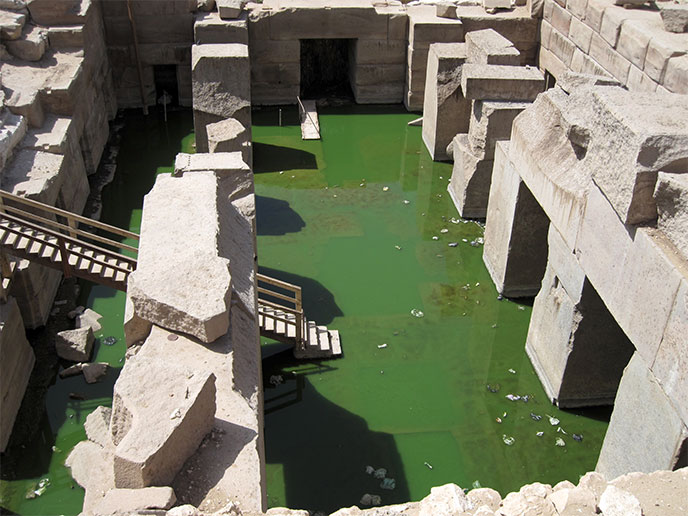
Hezechiah’s Tunnel
Ancient Jerusalem had its water tunnels too, as Hezekiah’s Tunnel for instance. Hezekiah’s Tunnel was cut through bedrock in 701 BC under the City of David, curving and weaving for 1750 feet (533 meters). If the same tunnel were cut in a straight line, it would be 40% shorter at only 1070 feet. This ‘curving/weaving’ may have been done to keep the grade drop or gradient altitude difference at 0.6% for the water flow.
This tunnel was designed and cut to bring water from the Gihon Springs in the Kidron Valley located on the east side of the Eastern Hill outside the city’s walls, through the bedrock of the Eastern Hill (130 feet below the ground surface) to the west side, where Hezekiah’s city of Jerusalem was expanding and protected by the new Broad Wall.
This tunnel was discovered by Edward Robinson in 1838 and was cleared by Montague Parker’s team during the years 1909-1911. The water had continued flowing through this tunnel for 2,700 years.
In fact, before its rediscovery, people thought the water in the area of the Pool of Siloam came from its own spring. It was not until later that people realized the water in the Pool of Siloam is actually water from the Gihon Springs over a third of a mile away. Water still flows naturally from the Gihon Springs today through Hezekiah’s Tunnel and to the Pool of Siloam.
Other sources in the world, deemed natural, are actually the result of sometimes invisible, often ignored ancient supply works.
The Hanging Gardens of Babylon

Another disappointment! I, who had carefully retained the name of the seven wonders of the ancient world, had dreamed so much of the hanging gardens of Semiramis in Babylon, of which nothing remains, I’ve been disappointed, alas! These gardens, so romantic and so celebrated, might never have been built in Babylon by Queen Semiramis, but at Nineveh a century earlier.
At least that is what British Egyptologist Stephanie Dalley thinks. She has located the gardens in question, as well as the gigantic network of canals used to irrigate them. First in the ruins of Nineveh she discovered a bas-relief showing the royal gardens of Senacherib, who had made Nineveh his capital. Senacherib was a king of divine essence, an enlightened monarch, in love with culture and technology.
He had gathered hundreds, thousands of clay tablets on which were recorded all the annals, legends, histories of the distant past, all the sciences known in his day, techniques, know-how, and thousands of other indications extremely valuable to historians. I named them the Assyrian encyclopedia. His nephew and successor Assourbanipal continued the work of his uncle, amassing in his turn myriads of tablets covered with cuneiform writing.
But the most beautiful achievement of Senachérib was undoubtedly those luxuriant gardens, where innumerable varieties of trees, shrubs and flowering plants came from every part of the world known for the pleasure of the king and his visitors .
On the threshold of the desert, the irrigation of the many cultivated terraces was no small matter. Senachérib had to dug a whole system of canals and aqueducts in order to convey water from Khinis to the Zagros Mountains, nearly 100 km to the north. Some of these waterways are as wide as the Panama Canal.
The complexity and perfection of this hydraulic network exceeds the understanding of archaeologists. “It is incredible that Senachérib and his engineers could have had such an overall vision without owning the cards we have today” stirred Stéphanie Dalley.
Who says they did not? The creed of the dominant thought. The archaeological dogma. The diktat of a dead science against a living past.
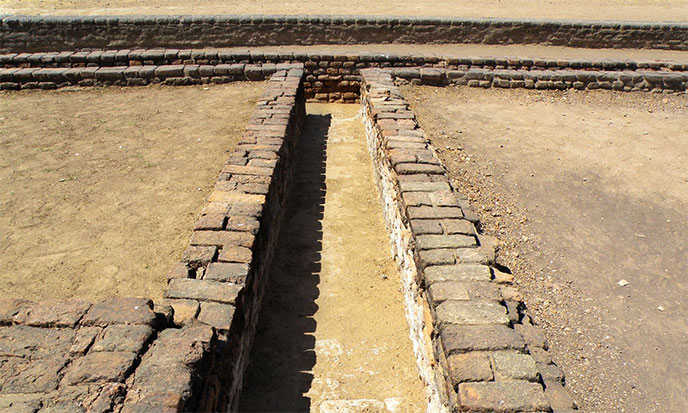
Rama’s Hydraulics
Mark Kenoyer describes the hydraulic systems of Mohenjodaro, the “city of wells” and its neighboring Harappa and Dholavira, all located in the Indus valley,
“According to the number of wells excavated areas, Michael Jansen calculated that the city would have been more than 700 wells. however Harappa had only one thirty, only eight wells were discovered in the excavated areas. where does this difference? Perhaps Mohenjodaro has had less rain in the winter and the course of the Indus going further.
At Harappa, a large depression in the center of the city could have been a reservoir open to residents of various neighborhoods. As for the site of Dholavira, it only has a few wells, but rain water was carefully collected in large tanks stone during the monsoon. Rainwater irrigated crops, we see that the collectors of rainwater were not the same as the waste water.” (Source)Mark Kenoyer, Ancient Cities
Since these lines were written, Dholavira has been enriched by a hydraulic nouveille wonder. The Archaeological Survey of India discovered a 5,000 BCE underground tank in Dholavira, according to the Times of India. It’s three times the size of Great Basin of Mohenjodaro, one of the best known architectures of ancient India.
It is a rectangular tank 73.4m on 29.3 m and 10 m depth. The archaeologist in charge of mission believes that there may be other reservoirs and wells to be discovered. Ad hoc analyzes will be made shortly. He hopes to find the former shoreline of the time Dholavira was an important port. This finding could be that of the oldest reservoir in India.
It is accompanied by another archaeological surprise: that staircase is actually a step well, a totally unique form and design. There is no explanation yet of these peculiarities. We know it opened access to vast underground tank but it is unclear the reason for this unique shape is still unclear.
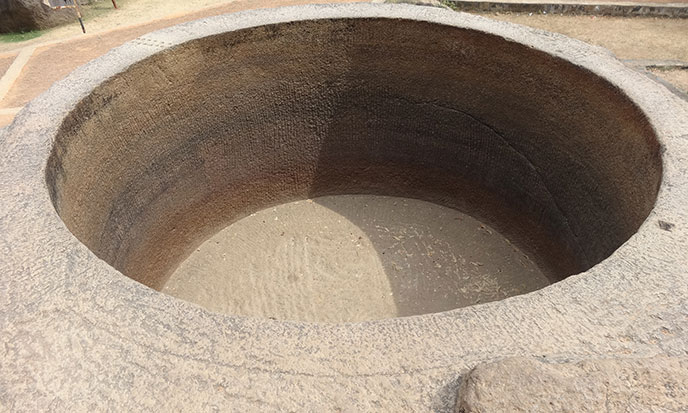
Further south, the ancient city of Mahabalipuram boasts huge blocks on which saws and diamond Punchers had a field a field day. This ancient holy city with many temples and pagodas also includes basins ablutions and pools carved into the rock.
We find the desire not to leave the stone in contact with rain water or storm water, which suggests to me that Mahabalipuram was another site lightning …
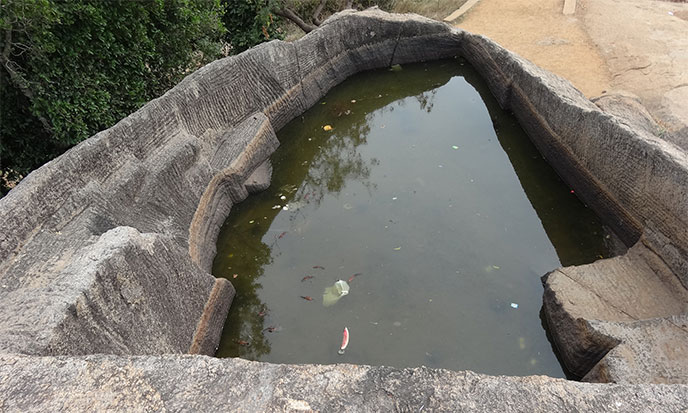
Gods Water
In some cities of the Andes, there were three pipe systems: one for lightning vibrated rainwater, another for spring water, and the last for wastewater. It is a luxury that today’s developed countries are hardly accessing. Certainly, we have lost much in knowledge as in wisdom.
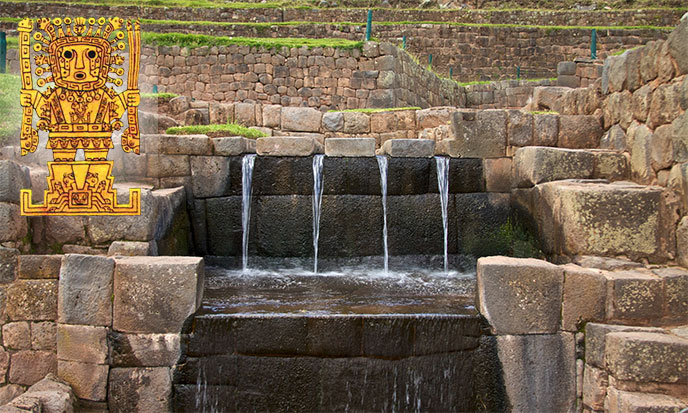
Sacred Hydrology
- Ancient Hydraulic Civilizations
- Wonderful City of Ys
- Solomon’s Magic Bath
- Cenotes And Sacred Wells
- Tipon, Eden of the Andes
- The Sayhuite Monolith
- The Angkor Enigmas
- Water Of Madness
- Water of Youth
- The Vital Water Of Marcel Violet


